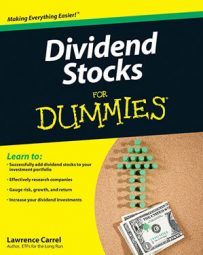Investing in dividend stocks carries some risk — the same as with any other type of stock investment. With dividend stocks, you can lose money in any of the following ways:
Share prices can drop. This situation is possible regardless of whether the company pays dividends. Worst-case scenario is that the company goes belly up before you have the chance to sell your shares.
Companies can trim or slash dividend payments at any time. Companies are not legally required to pay dividends or increase the payments they make. Unlike bonds, where a failure to pay interest can put a company into default, a company can cut or eliminate a dividend whenever it wants. If you’re counting on a stock to pay dividends, you may view a dividend cut or elimination as losing money.
Inflation can nibble away at your savings. Not investing your money or investing in something that doesn’t keep pace with inflation causes your investment capital to lose purchase power. With inflation at work, every dollar you scrimped and saved is worth less (but not worthless).
Potential risk is proportional to potential return. Locking your money up in an FDIC-insured bank that pays an interest rate higher than the rate of inflation is safe (at least the first $100,000 that the FDIC insures), but it’s not going to make you rich. On the other hand, taking a gamble on a high-growth company can earn you handsome returns in a short period of time, but it’s also a high-risk venture.

